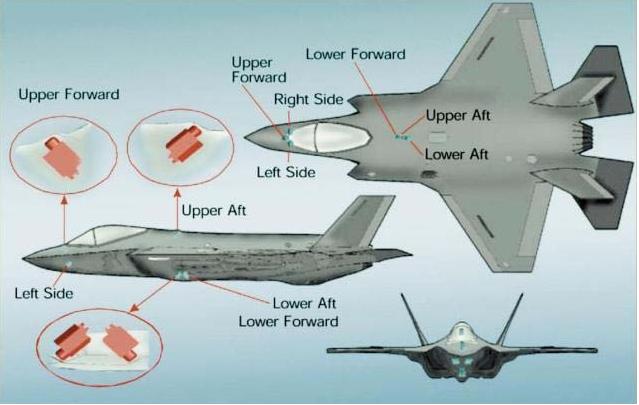I've done some research about the F-35 EO sensors, EOTS and DAS. I was wondering how the TF-X EO sensors EOTS and FSSS (Full Spherical Sensing System) would stack up against the F-35 and I've found some interesting information. Apparently, the F-35 EOTS uses a 1024x1024 MWIR FPA, something which Turkey is working on through the 'NAR' project. 1024x1024 MWIR is a resolution that is firmly within reach of Turkeys capability in the near-term.
Products with a resolution near or better than 1024x1024 are currently under development. TF-X EOTS Block 1 should have no problems flying around with a fully tested and developed EOTS with a resolution of 1280x720/1024.
View attachment 24940
Detailed information about the F-35 DAS is a bit more difficult to find but it is also based on MWIR with a 95* FOV both in EL and AZ. 6 DAS sensors provide to have a full 360* spherical coverage.
Apparently with a display vision acuity on the HMD between 40/20 and 20/20, the 95* FOV MWIR would be anywhere between 2850x2850 pixels and 5700x5700 pixels respectively. The averages out to 4275x4275. This is very close to 4096x4096 pixels ROIC mikro-tasarim is working on.
ROIC for 4kx4k detectors with 15μm pixel pitch are merely 5x5 cm small. 10μm pixel pitch is even smaller at around 4x4 cm. This corresponds with the claim that the DAS sensor is "A little smaller than a soft drink can" (5 to 6 cm in diameter). This is small enough to make the FSSS equal within a small margin to the DAS.
We can be confident that the TF-X EOTS and FSSS are going to be on par or slightly better than the current (pre block-4) F-35 EOTS and DAS.
Sources:
https://www.lockheedmartin.com/content/dam/lockheed-martin/eo/documents/webt/F-35_Mission_Systems_Design_Development_and_Verification.pdf
Military aviation forum mainly focusing on the F-16, F-35 and F-22 jet fighters. Contains high quality discussions and has a gentle but strict moderation.
www.f-16.net
https://www.raytheon.com/sites/default/files/news/rtnwcm/groups/public/documents/content/rtn08_tech_sensing_pdf2.pdf
The Lane Cove West Business Park on Sydney’s north shore is a sleepy little place, but inside one of its...

www.gizmodo.com.au
Official web site of Mikro-Tasarım Elektronik San. ve Tic. A.Ş.

www.mikro-tasarim.com.tr









